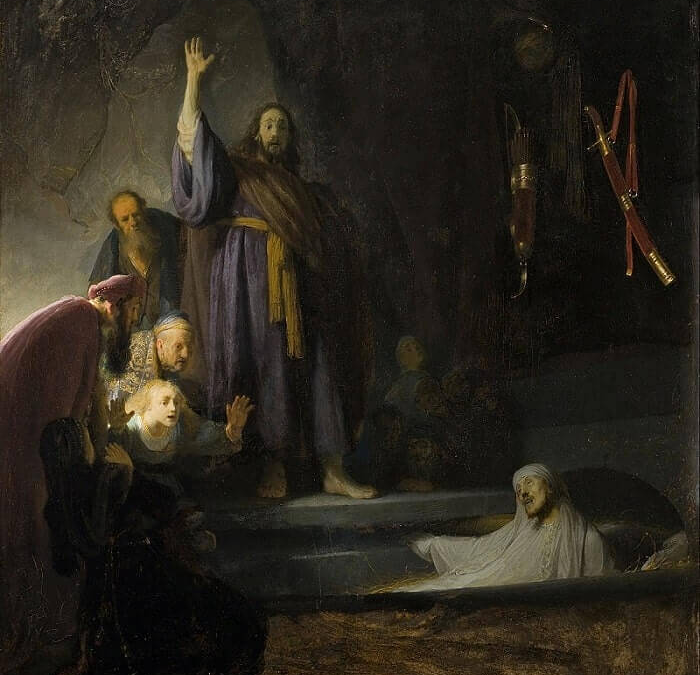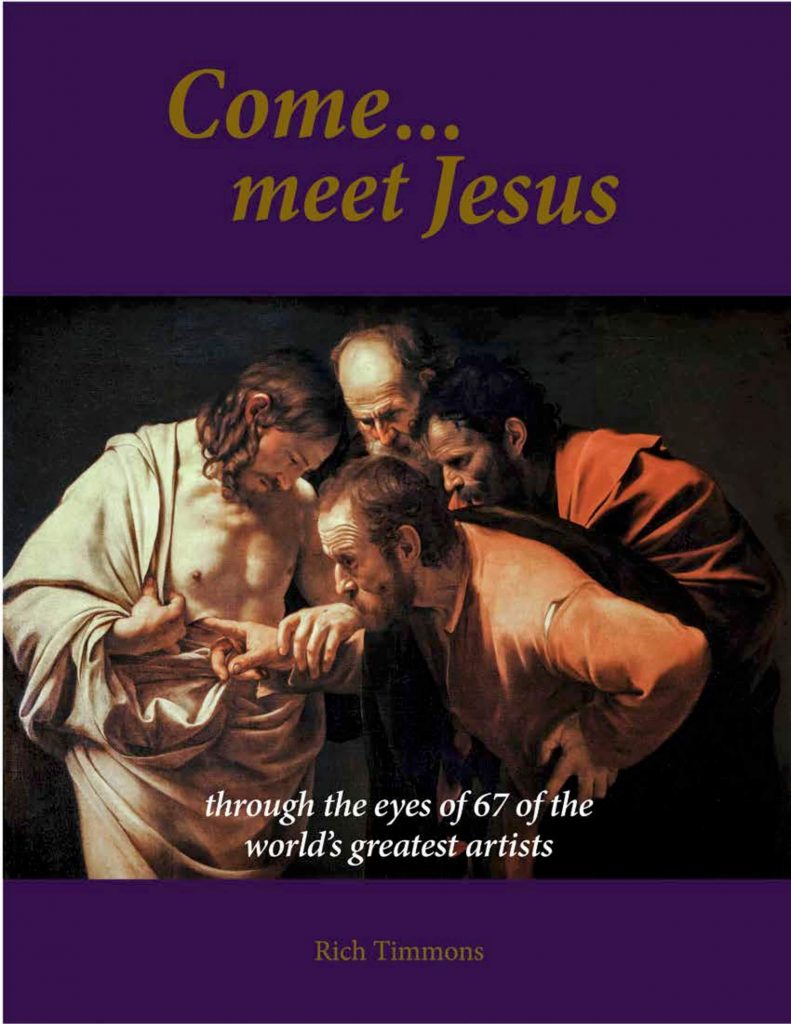Jesus therefore, again groaning in himself, came to the tomb. Now it was a cave, and a stone lay against it. Jesus said, “Take away the stone.” Martha, the sister of him who was dead, said to him, “Lord, by this time there is a stench, for he has been dead four days.” Jesus said to her, “Didn’t I tell you that if you believed, you would see God’s glory?” So they took away the stone from the place where the dead man was lying. Jesus lifted up his eyes, and said, “Father, I thank you that you listened to me. I know that you always listen to me, but because of the multitude standing around I said this, that they may believe that you sent me.” When he had said this, he cried with a loud voice, “Lazarus, come out!” He who was dead came out, bound hand and foot with wrappings, and his face was wrapped around with a cloth. Jesus said to them, “Free him, and let him go.” John 11:38-44
This painting is a shouting testament to Christ’s power over death! The subject of Lazarus being raised from the dead has been popular throughout art history. It is full of emotion, intensity, drama, and awakens the imagination. It communicates important doctrinal truths about Jesus and His power. And, it offers hope to all who hear it, as it strengthens our faith in Christ’s resurrection and the eventual resurrection of our loved ones and ourselves too. Every painting of Lazarus being raised shows a slightly different facet of the jewel that is this miracle. That is one of the beautiful things about art created to illustrate Scripture; it allows us to consider multiple aspects of an event recorded in the Bible.
This particular painting, more than any other illustrating this event, shows Jesus’ absolute command over death. Rembrandt’s composition and positioning of the figures says it all. Jesus is like a mighty pillar, on a ‘third line’ based on the rules of good composition, made of several strong verticals with His arm raised, His body, and the folds of his clothing. His feet are planted firmly. His body seems slightly thicker than it should be, especially His lower half, which gives a sense of some foreshortening or putting the viewer slightly below Him, but more so acts to make Him appear as a firmly planted tree trunk. He is immovable in the face of the seemingly unstoppable force of death. What a savior! We know that before this, he wept, spoke with Lazarus’ sisters, lifted His eyes to heaven, and prayed. His body language would have been different in those moments. But this is the moment that He cries out with a loud voice and calls Lazarus straight out of death back into life, and Rembrandt communicates that authority.
In contrast, the setting is comprised of mostly horizontals, except the hanging sword and scabbard. According to legend, Lazarus was a soldier, though scripture does not say what he did. The figures witnessing this miracle are all on diagonals and horizontals as well, astonished and amazed at what they behold. Lazarus himself looks like he is caught in that half moment right as he moves from death to life. His gesture is like a series of curved horizontals, like life literally just fell back into his cold, dead, rotting frame and is getting itself in order; in an instant the color will flood his cheeks again, and he will stand. Rembrandt reminds us in this painting that Jesus is God, and He is Lord over life and death. He raised Lazarus, He raised Himself, and one day He will raise all the saints to life!
Want to see more? Like, follow & sharehttps://www.facebook.com/comemeetjesus.art
Shop coffee table books here. Use promo code S50 for 50% off!


